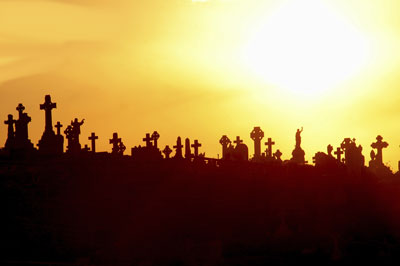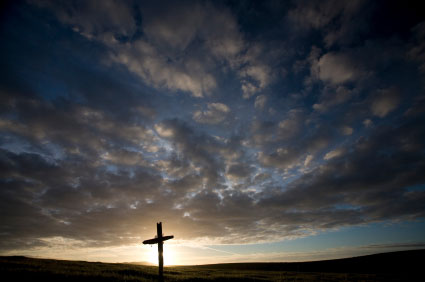| Jesus' Resurrection: When Truth Confronts our Worst Suffering |
||
 by Gary R. Habermas by Gary R. HabermasOriginally published in the book A Thinking Christian's Devotional, by Kelly Monroe Kullberg and Lael Arrington (Zondervan, forthcoming, 2008). This is an electronic copy of the entire article. Good theology is indispensable. Having strong reasons for these beliefs is even better. But being able to apply both to the worst suffering we will ever face may be the toughest task of all. My wife and I visited the hospital in 1995 for what were described as fairly routine tests. Within minutes, however, my world changed forever. Debbie might have cancer. But I was unprepared for the final verdict: terminal stomach cancer. There was no remedy. I measured my life by the severity of the shocking news that arrived repeatedly in the days ahead. Sometimes I was unsure how to place one foot in front of the other. I remember those days very clearly, along with the daunting questions. Debbie was only 43 years old. We had four children still at home. But four months later she died. We celebrated our 23rd anniversary while she was in bed. My dearest friend was gone. Irrevocably. The pain failed to subside. What could I tell my children? I said this was the worst pain I could experience. During our ordeal, a graduate student asked me: "Where would you be now if Jesus hadn't been raised from the dead?" I have spent 40 years researching Jesus' resurrection and it was obviously relevant to my wife's sickness. But my investigation was devoted chiefly to the historical, theoretical aspects. God had to teach me how to apply resurrection truth to my daily life.
A quick summary shows that critical scholars seldom ever questioned Jesus' death by crucifixion. Virtually no one doubts that, afterwards, Jesus' followers at least thought they had seen the risen Jesus. Accordingly, they were willing to die, and many of them did. Further, skeptics like Jesus' brother, James, and Saul of Tarsus were even converted by their own experiences with the risen Jesus. And almost all scholars acknowledge that the resurrection message was proclaimed very early--even immediately after the crucifixion. Moreover, Jesus' tomb was found empty. Let's look in more detail at just a couple of categories of evidence for the resurrection and the early testimony to seeing the risen Jesus. Nearly all scholars think that after Jesus' death, the disciples' had real experiences which they reported were appearances of their Master. This is a critical starting point. The most important text is 1 Corinthians 15:3-7, and is taken by scholars to be the strongest indication of the historical resurrection appearances. Most think that this testimony constituted the oral teaching of the earliest church and actually predates Paul's conversion or the New Testament. There is little dispute that Paul is passing on this tradition that he received, probably from the apostles Peter and James the brother of Jesus during his first visit to Jerusalem, just three years after his conversion (Gal. 1:18-24). Scholars generally place Paul's reception of this material in the mid-30s A.D. Years later, Paul confirmed the nature of this Gospel proclamation with Peter, James, and John (Gal. 2:1-10). A stronger substantiation from these four best-known, earliest eyewitnesses could hardly be hoped for from an ancient historical text. Further, the empty tomb is strongly attested. According to all four Gospel accounts, women are cited as the key witnesses. But due to the strong Jewish disinclination to recognize female testimony in decisive issues, these texts probably would not have agreed in citing the women, unless they were actually the principal witnesses. Further, the location of the tomb in Jerusalem meant it could be observed by either friend or foe. Also, critical scholars agree that the empty tomb report is attested in several of the Gospel sources. I had concluded that the best explanation for these events was that Jesus had truly been raised from the dead and appeared to His followers. Critics seemed strangely unable to offer a more convincing explanation. But here the facts of history touch our lives. Jesus suffered arguably the most painful death imaginable. Nothing altered His pain--it raged hour after hour. He cried out to His Father but without any physical relief. Even the Son of God learned through His sufferings (Heb. 5:8). Then it hit home: Why should I expect less suffering? If God did not stop His Son's pain, on what grounds could I demand better treatment? But Jesus' prayer was answered after His suffering ended, on the first Easter morning. In a similar manner, Debbie's resurrection would also be God's answer. I still do not know why she died, but I know the One who raised His Son. The fact of Jesus' resurrection trumps even our greatest suffering. As Paul states, Christians mourn for their loved ones, too, but we mourn with resurrection hope (1 Thes. 4:13-14). Death has lost its biggest sting (1 Cor. 15:53-57).
|
||
|
 During my own skeptical years, I had developed a
strategy called the "minimal facts method." Basically, I
argued in many books and debates that the New Testament was at
least a book of ancient literature. But even on this basis
alone, we still have plenty of facts to show that Jesus truly
had been resurrected. I even took the historical data that
skeptics had good reasons to admit and used their own basis to
argue the resurrection.
During my own skeptical years, I had developed a
strategy called the "minimal facts method." Basically, I
argued in many books and debates that the New Testament was at
least a book of ancient literature. But even on this basis
alone, we still have plenty of facts to show that Jesus truly
had been resurrected. I even took the historical data that
skeptics had good reasons to admit and used their own basis to
argue the resurrection.
